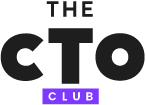It’s the time of year when CTOs have a chance to reflect on how well their tech stacks tackled the challenges of business transformation and whether they’ve got what it will take in the new year to perform optimally and jump on new technologies seamlessly.
For many years, companies have focused on the critical layers of infrastructure, including cloud, hardware, and virtualization, while also ticking the boxes behind good data management and enterprise information management.
In 2025, we’re set to see more no-code GenAI offerings that will empower the citizen developer movement. Companies will continue their rollout of these offerings, helping users automate processes and generate code with ease. This will expedite software development and enhance productivity across the platform.
However, the reality is that without better development operations management, many companies will struggle to reap the benefit of these offerings. As they attempt to capitalize and generate ROI from GenAI, many will succumb to their backlog due to 'process debt' and realize that their delivery operations can't support their aspirations to be truly innovative with AI.
Businesses will be faced with a tough decision. If they can't find the right solutions to optimize their delivery operations and clear their process debt, they will have to choose between dropping some of the projects in their backlog so they can jump on AI or pushing their backlogs even further.
The Tech Stack Driving Business Transformation
When your architecture is small, it’s easy to be agile, and platforms are invaluable in helping organizations scale to deliver major product updates more frequently. However, this scalability often leads to the proliferation of multiple platform instances and application owners across departments, creating complexity that is difficult to track and even harder to optimize.
Managing multiple platform instances has become a critical challenge for organizations as their footprints grow. Many still approach instance management much like servers were managed in the pre-cloud era—individually and in isolation.
This fragmented approach results in long delays in development pipelines or, worse, a backlog resulting from process debt so overwhelming that it hinders innovation. For example, while platforms are rapidly introducing new AI capabilities, many organizations find themselves so burdened by existing project workloads that they must delay the adoption of transformative features.
Multi-instance management—the practice of governing and coordinating multiple platform instances—has become essential for ensuring efficient operations across development, testing, and production environments in ServiceNow.
Throughout 2025, we’ll continue to see ServiceNow enterprise footprints grow more complex. CTOs will need tools that provide this "single pane of glass" view of their technology infrastructure. They will need solutions that offer comprehensive oversight, tracking differences between instances, deprecated applications, and potential integration points.
The deployment of hybrid cloud solutions for next-gen LLM and AI platforms will continue to scale in 2025. I expect to see a broader embrace of hybrid cloud solutions, which marry the best attributes of public and private clouds while allowing for seamless data and application sharing.
A multi-faceted cloud strategy (co-hosted for some aspects of the platform) is a foundational element of CTO strategy for AI adoption and integration across their organizations’ various departments. Procurement departments, for example, can and should embrace AI tech, but choosing which AI tools to employ is just the first step – integrating and coordinating those tools is what delivers real ROI.
I also expect to see CTOs across enterprises of all sizes embrace AI agents.
AI-Driven Governance and Compliance
With the rise of AI comes the critical need for robust governance frameworks. Low-code/no-code (LCNC) platforms have come a long way in connecting and automating multiple business workflows. However, the reality is that many organizations using these platforms still aren’t up to scratch on their governance, compliance, and accountability.
Ask the question ‘who’s got permission to do what?’ across a large enterprise and you may get answers that vary widely, leading to confusion surrounding control and permissions across deployment flows and the software development lifecycle.
Maintaining compliance across multiple instances can become difficult without clear visibility and control, raising security and regulatory breach risks. In the new year, we’ll see companies begin to take a more strategic approach to governance, adopting technology that takes an automated approach to allow streamlined decision-making within defined limits.
The most forward-thinking organizations will invest in tools that can track and document changes across technology platforms, automate compliance processes, and mitigate security risks associated with AI implementation.
We’ll see the emergence of platforms and practices that promote visibility and control, combining automation with multi-instance visibility to ensure compliance without manual intervention or high setup costs.
The focus will be on reducing unauthorized changes, ensuring speed with safety, and deploying smaller, incremental changes and minor updates to achieve continuous improvement.
10 CTO Club Picks for Top Low Code Platforms!
Here's my pick of the 10 best software from the 10 tools reviewed.
Better Developer Productivity Tools
Over the past few years, CTOs have been integrating a number of different developer productivity tools into their tech stacks, and in 2025, we’ll see more cross-environment developer productivity tools become more integrated, helping to shrink time-to-market for development.
Platform engineering tools will expand their scope and make scalability and monitoring improvements. Internal developer platforms (IDPs) will emerge as key enablers for accelerating development cycles, fulfilling the promise of quicker time-to-market.
We’ll also continue to see more CTOs implement low-code/no-code platforms to democratize development. LCNC platforms will see significant market growth, integrate advanced technologies like AI, and expand into industry-specific applications.
We’ll see citizen developers become even more central, while AI-powered features will enhance integration with IoT and blockchain. Of course, the challenge will now lie in governance to ensure the quality and security of citizen-developed solutions.
Development Operations for Growth
As CTOs reflect on the strengths and weaknesses of their current tech stacks, the need for a more cohesive, future-proof approach becomes apparent.
In 2025, staying competitive means prioritizing innovation with operational efficiency. This includes adopting advanced technologies like GenAI and low-code and no-code app builders and addressing process debt by challenging and correcting the pervasive status quo bias that autopilots delivery operations.
The coming year offers an opportunity for organizations to clear process debt and implement smarter tools for multi-instance management and better governance to maintain compliance and security.
By focusing on platform visibility, streamlined workflows, and scalable operations, CTOs can ensure their technology stacks are well-positioned to foster agility and innovation.
Subscribe to The CTO Club’s newsletter for more tech stack insights.




